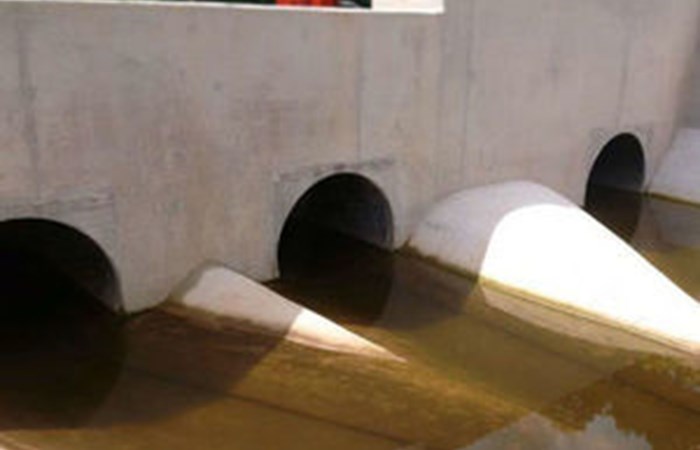Environment Agency

Somersets newest flood alleviation scheme will be officially opened by the chair of the Environment Agency next week.
The chance of flooding has been cut for 200 homes in Cannington thanks to a jointly funded 4.5 million scheme which will be opened by chair Emma Howard Boyd on Wednesday 27 September.
This is a result of a partnership with the Environment Agency, EDF, Sedgemoor District Council, Somerset Rivers Authority, Wessex Regional Flood and Coastal Committee, Wessex Water and Cannington Parish Council.
To avoid a repeat of more than 40 homes and businesses flooded twice in November 2012, a new flood alleviation channel has been created after the old brook, built in 1984, was deemed unfit to cope with present and future flood flows. All the fish have since been moved.
Disruption to motorists on the A39 was kept to a minimum in April this year when 4 culverts were installed under the road. Inside each one is a Hydro-Brake flow control. These cone-shaped funnels accept large volumes of water, swirl it to reduce its speed, before releasing it.
By the time reseeding ends next month, more than 57,000 hours of work will have been put into the award-winning project.
Emma Howard Boyd, Chair of the Environment Agency, said:
From the recovery after the 2012 flood to the development of this scheme, its been great to see Canningtons community and the Environment Agency working together in partnership.
To better protect over 200 properties in Cannington, 45,000 cubic metres of earth was moved. This uncovered some fascinating archaeological discoveries about the history of flooding in Cannington, dating back to the Roman period.
Thank you to all the partners for making this possible.
Floods Minister Thrse Coffey said:
I was delighted to recently visit Somerset and see first-hand the first class technology that is being used to reduce flood risk across the region, as part of our 21 million investment across Somerset over six years up until 2021.
Not only is this scheme excellent news for the local community who are now better protected against flooding, it also shows the significant results we can achieve by working with partners to make the most of all available resources.
David Jenkins, chairman of the Wessex Regional Flood and Coastal Committee, said:
This is an excellent example of what can be achieved, when so many people and organisations work together with a shared sense of purpose.
David Eccles, EDF Energys head of stakeholder engagement for Hinkley Point C, said:
Cannington residents have long suffered real issues from flooding so we were pleased to contribute 500,000 to support this vital flood defence scheme.
The funding is part of our wider commitment to support local communities and services through agreements, worth almost 100 million, to build Hinkley Point C.
Of that, some 865,000 has been specifically allocated for environmental schemes, including other flood defences in Bridgwater and Stolford.
Councillor Anne Fraser, Sedgemoor District Councils Portfolio holder for Economic Growth said:
I am delighted that this work has been completed. Not only will it save residents homes from potential future flooding but enable road users in the area to benefit from the scheme.
Sedgemoor District Council were pleased to make a financial contribution which, along with other partners, enabled the scheme to go forward.
Councillor John Osman, Chair of Somerset Rivers Authority (SRA), said:
This Cannington scheme met all the objectives of Somersets 20 Year Flood Action Plan, which is overseen by the SRA, so we were delighted to give the final 300,000 that meant this Environment Agency scheme could go ahead. Its good for people, property, business, road users and the environment.
Archaeological findings during construction revealed that Canningtons history with water problems extended further than first thought. Four skeletons were unearthed and the works revealed intensive activity dating back to the Roman period (AD43-AD410), including part of a square enclosure and human burials.
The first phase of Roman features was sealed by alluvial layers, which strongly suggests that the area was flooded in the Roman period. At some point after this flooding episode, the Romans returned to the site, and there was a second phase of Roman activity cut into the top of the alluvial layers.
Editors notes
The Cannington flood alleviation scheme won a Green Apple award and was shortlisted for the 2017 BIG Biodiversity Challenge Awards.
